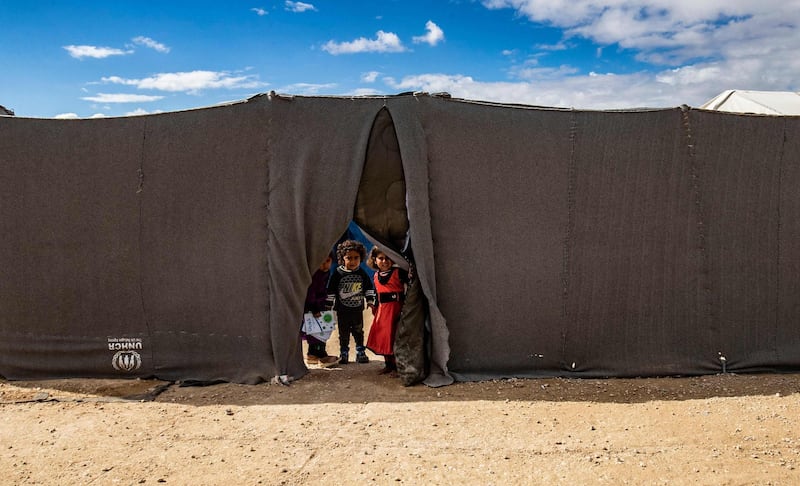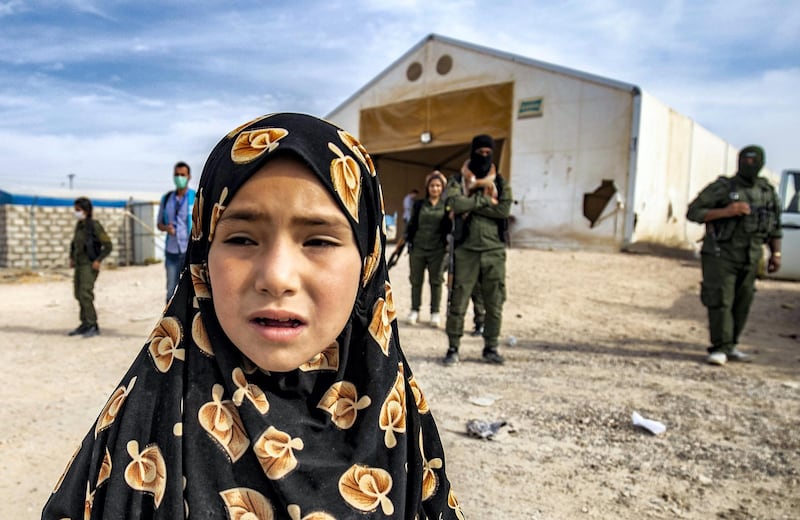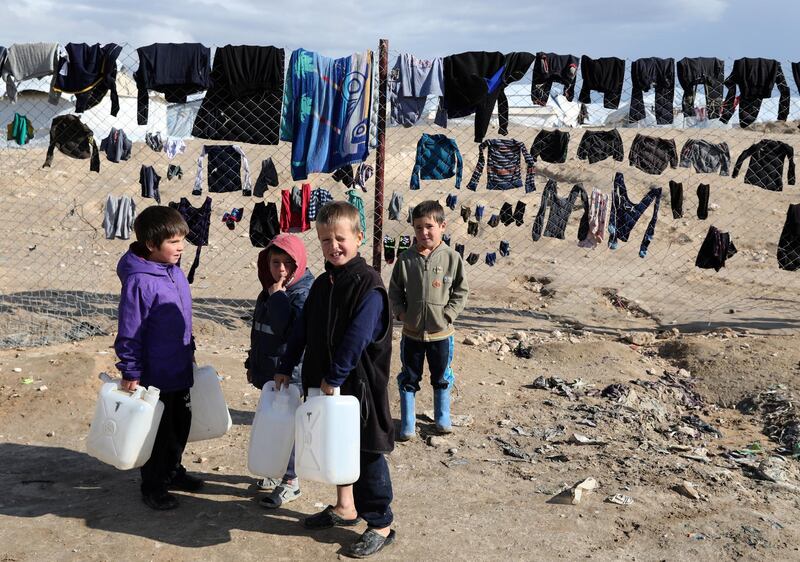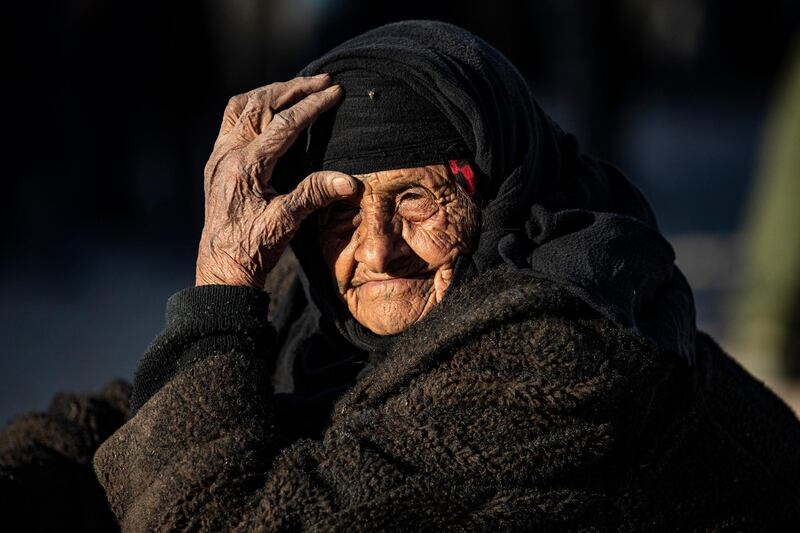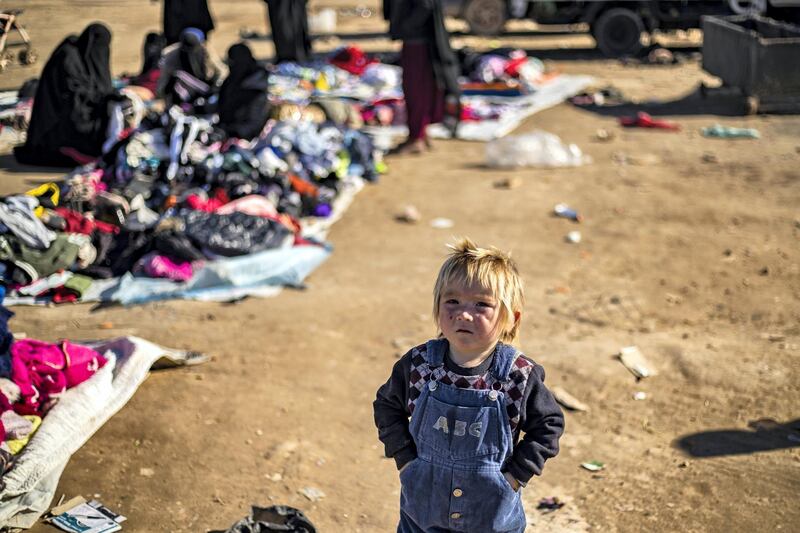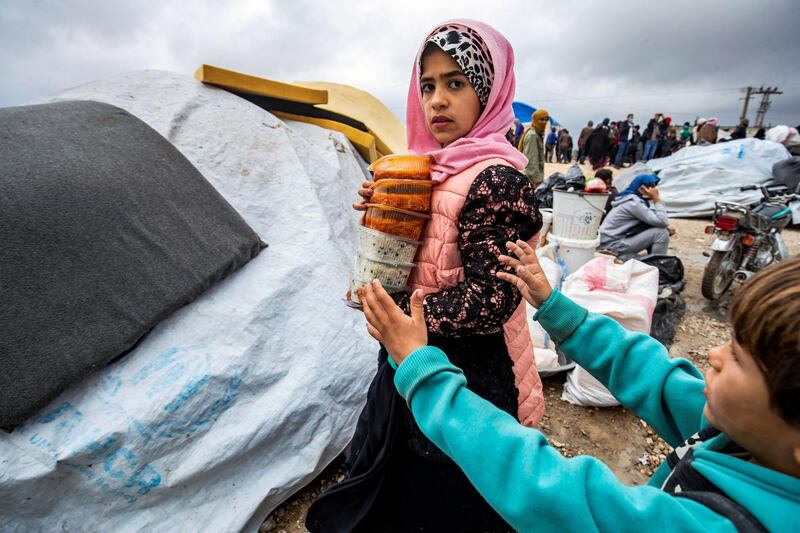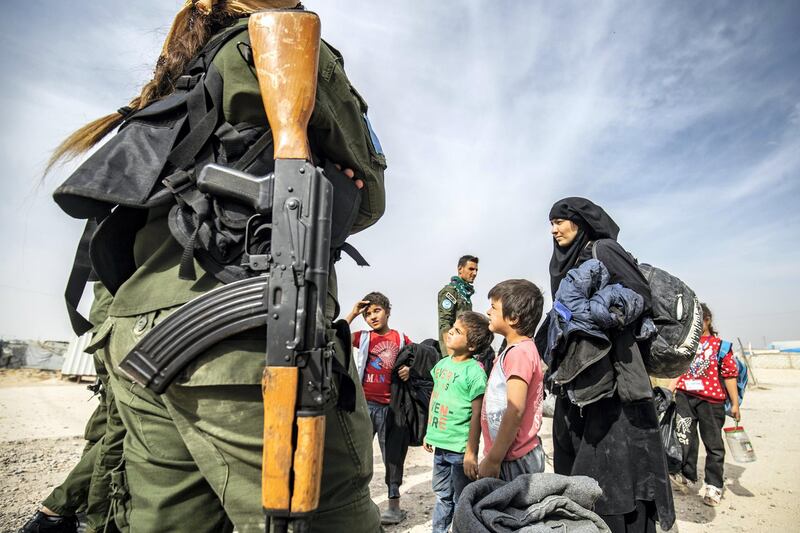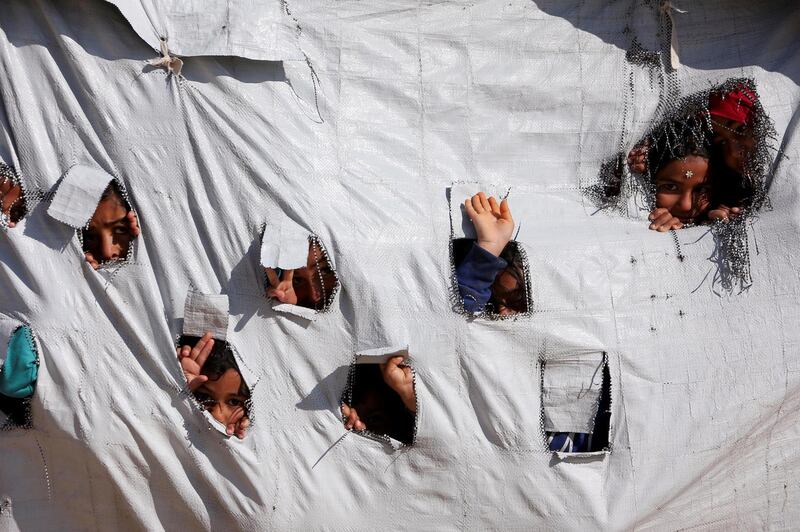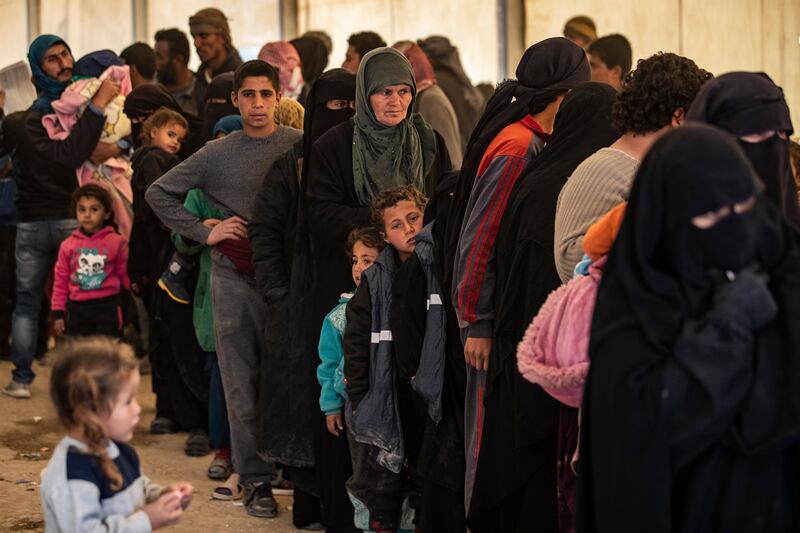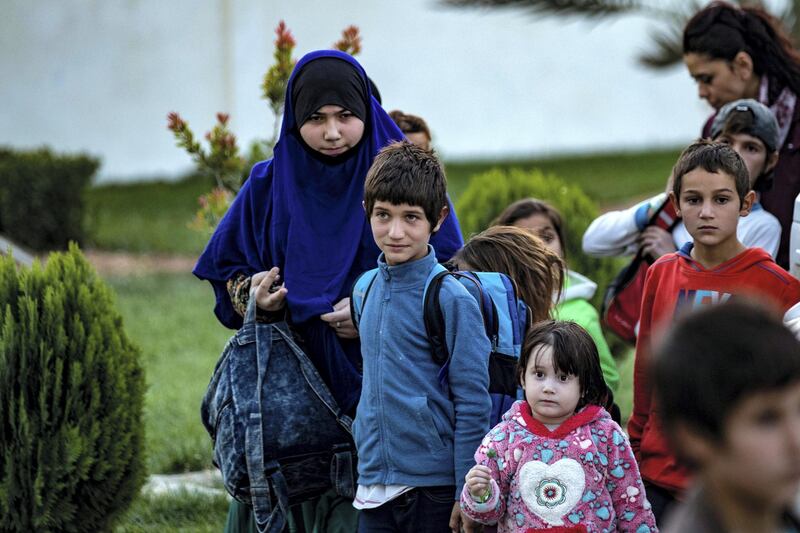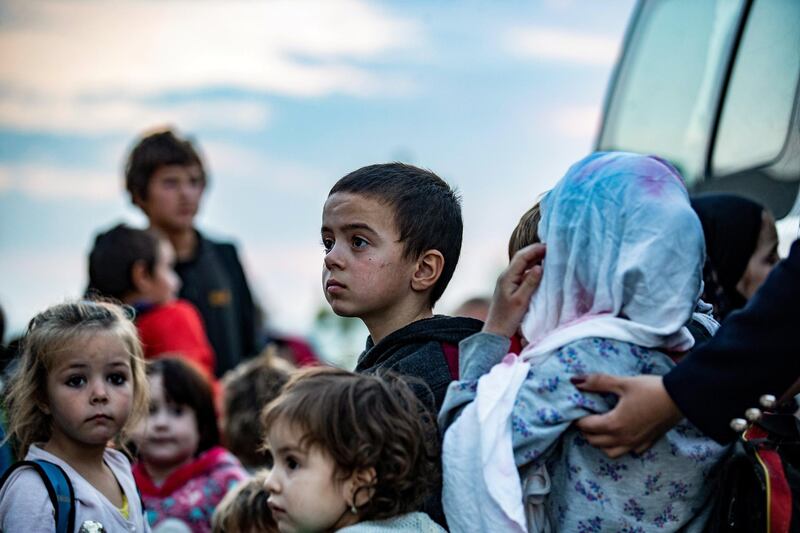Deaths continue to stack up: a policeman shot dead with a pistol equipped with a silencer; a local official gunned down, his son wounded; an Iraqi man beheaded.
In total, 20 men and women were killed last month in the sprawling camp in north-east Syria housing families of ISIS members.
The slayings in Al Hol camp – nearly triple the deaths in previous months – are largely believed to have been carried out by ISIS militants punishing perceived enemies and intimidating anyone who strays from their extremist line, according to Syrian Kurdish officials who run the camp but say they struggle to keep it under control.
The jump in violence intensifies calls for countries to repatriate their citizens resident in the camp, which is home to about 62,000 people. Those repatriations slowed dramatically because of the coronavirus epidemic, officials said. If left there, the thousands of children in the camp risk being radicalised, local and UN officials said.
“Al Hol will be the womb that will give birth to new generations of extremists,” said Abdullah Suleiman Ali, a Syrian researcher who focuses on extremist groups.
It has been nearly two years since the US-led coalition captured the last sliver of territory held by ISIS, ending the extremist group's self-declared caliphate that covered large parts of Iraq and Syria.
The war lasted several years and left US-allied Kurdish authorities in control of east and north-east Syria, with a small presence of several hundred US forces still stationed there.
Since then, the remaining ISIS militants have gone underground in the Syrian-Iraqi border region, continuing an insurgency. Although there are fewer attacks in Syria than there were in late 2019, ISIS sleeper cells continue to attack Syrian government troops, forces of the Kurdish-led Syrian Democratic Forces (SDF) and civilian administrators.
Al Hol houses the wives, widows, children and other family members of ISIS militants – more than 80 per cent of its 62,000 residents are women and children. The majority are Iraqi or Syrian, but about 10,000 people from 57 other countries are housed in a highly secured separate area known as the Annex. Many of them are die-hard ISIS supporters.
Syrians to be removed from Al Hol
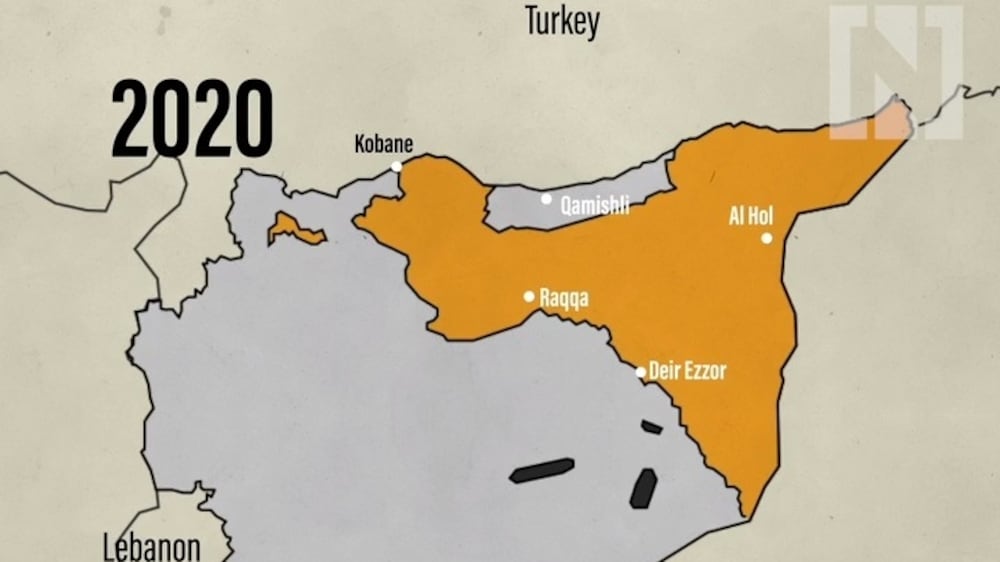
The camp has long been chaotic, with the hardcore militants among its population enforcing their will on others and seeking to prevent them from co-operating with Kurdish authorities.
ISIS cells in Syria are in contact with residents of the camp and support them, said a senior Kurdish official, Badran Cia Kurd. “Anyone who tries to reveal these contacts or stops dealing with Daesh is subjected to death,” he said, using the Arabic acronym for ISIS.
The US-backed SDF tweeted last week that, backed by air surveillance from the coalition, they detained an ISIS family smuggler in the area of Hadadia near the camp.
“There are several reasons behind the increase of crime, including attempts by Daesh members to impose their ideology in the camp against civilians who reject it,” said Mr Ali, the researcher.
Of the 20 killings at Al Hol in January, at least five of the dead were female residents of the camp, according to the Rojava Information Centre, an activist collective that tracks news in areas controlled by the SDF. All the victims were Syrian or Iraqi citizens, including a member of the local police force, and most were killed in their tents or shelters at night, the RIC said.
Most of the victims were shot in the back of the head at close range, according to the RIC and the Syrian Observatory for Human Rights, an opposition war monitor in Britain.
On January 9, a gunman killed a policeman in the camp using a silenced pistol, then as other police chased him, he threw a hand grenade that seriously wounded the patrol commander, the Observatory said. The same day, an official with a local council dealing with Syrian civilians in the camp was shot to death and his son critically wounded.
In another case, an Iraqi camp resident was decapitated, his head found some distance from his body, the RIC reported. It is believed he was killed on suspicion that he was co-operating with authorities.
The immediate cause for the increase in killings was not known. In November, Kurdish authorities began an amnesty programme for the 25,000 Syrian citizens in the camp, allowing them to leave. Some speculate that, since those taking amnesty must register and work with authorities, the programme may have prompted slayings to keep residents in line.
Many Syrians fear leaving the camp because they may face revenge attacks in their hometowns from those who suffered under ISIS rule.
Whatever the cause, the bloodshed points to ISIS's strength in the camp. The local civilian Kurdish authority known as the Autonomous Administration of North and East Syria said in late January that some elements were trying to revive ISIS and that the authority could not face this crisis on its own.
ISIS supporters in the camp carry out trials of residents suspected of opposing them and kill defendants, and authorities have uncovered several ISIS cells in the camp, it said. “Contacts are ongoing between the camp and Daesh commanders outside who direct their members inside,” it said.
About 27,000 non-Syrian children are stranded in Al Hol, including about 19,000 Iraqi children and 8,000 from other countries. On January 30, UN counterterrorism chief Vladimir Voronkov urged home countries to repatriate the children because they are at risk of radicalisation.
The coronavirus pandemic brought a drop in the already slow process of repatriation. Many countries are reluctant to take back their citizens, although France repatriated seven children in January and Britain one child in September.
Iraq has taken back very few. Repatriation by other countries dropped in 2020 to only 200 children, from 685 in 2019, according to Save the Children.
“These new figures show that before the outbreak of the virus, things were finally starting to move in the right direction,” said Save the Children’s Syria response director Sonia Khush.
